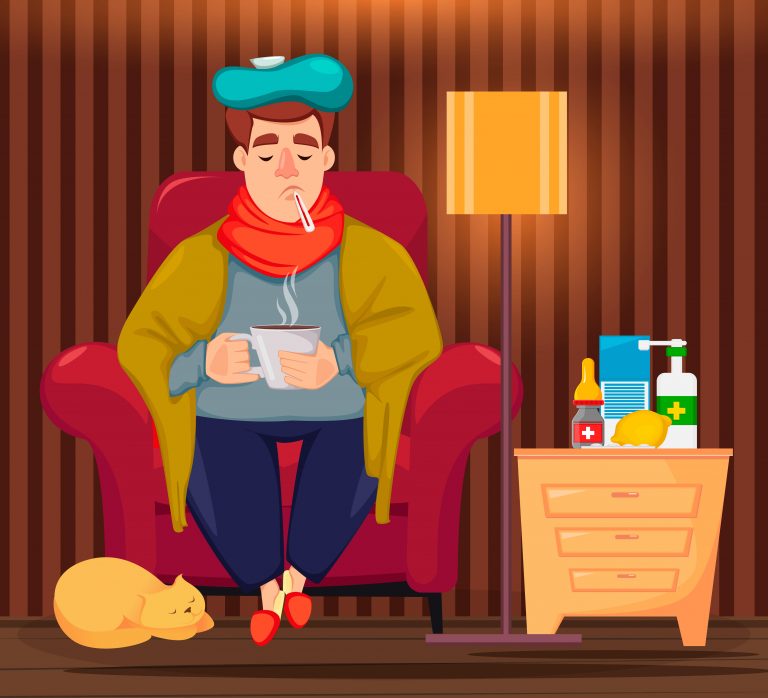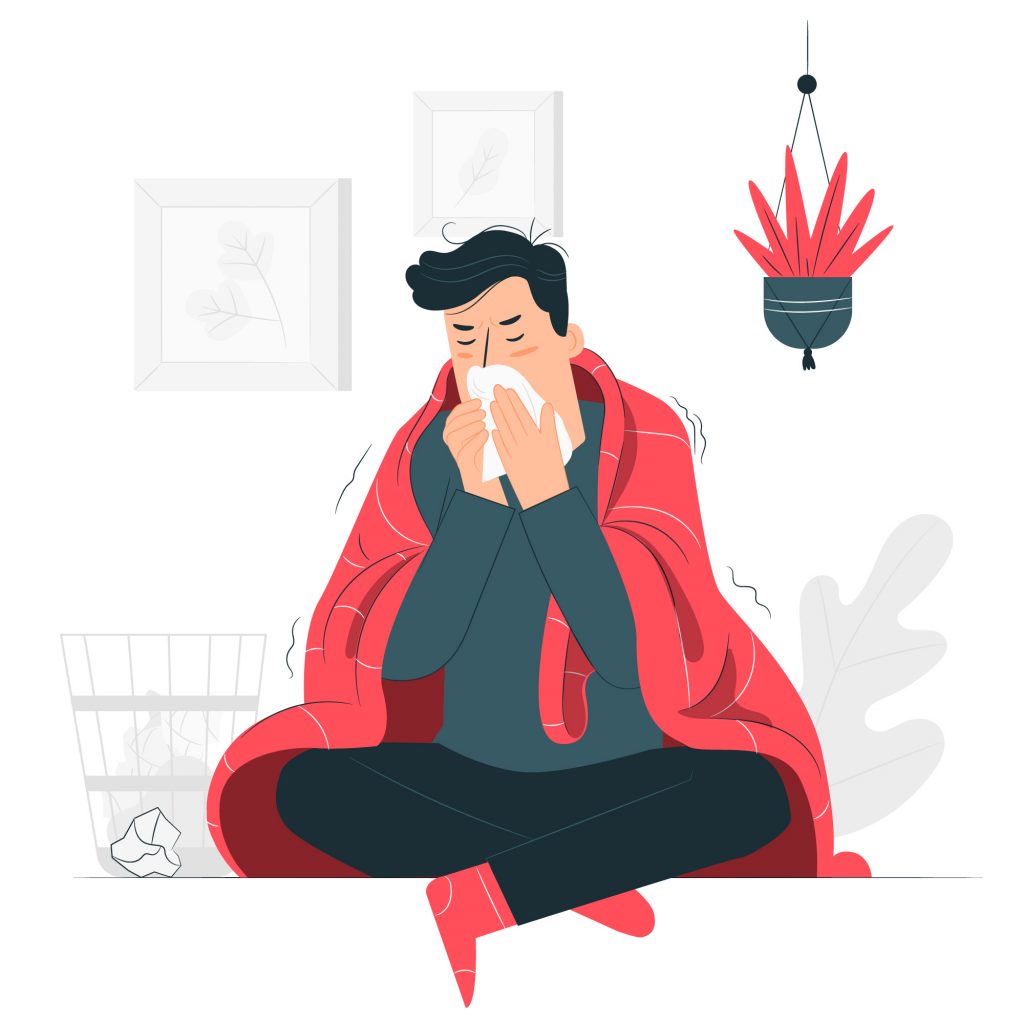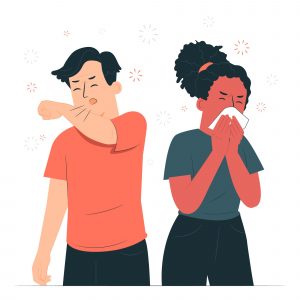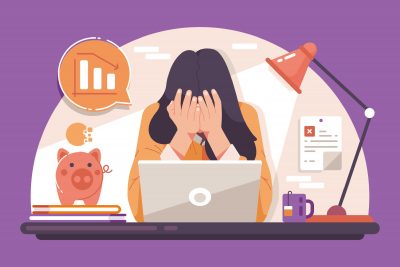
Seasonal Allergies vs. Common Cold Fall seems to be the perfect season for sneezing and wheezing. Why is that? How can you know if it…

Fall seems to be the perfect season for sneezing and wheezing. Why is that? How can you know if it is a seasonal allergy or common cold?
“What is your favorite season?” this is a popular question that people ask. However, for persons with seasonal allergy symptoms, there is no preferred season. Allergy symptoms can occur in any season but commonly arise during spring and fall when flowers and plants grow or die off. Pollens are little, round-shaped powdery grains released from flowering plants dispersed through the wind or carried by insects. These symptoms can be a major inconvenience to people, affecting the way a person lives generating poorer productivity.
Do you often have a runny nostril, frequent sneezing episodes at a certain time of the day, which occasionally may go up to 400-500 sneezes, and a stuffy nose virtually around the year? And have you resigned yourself to being stuck with this ‘common cold’ that does not seem to leave you? If you experience these symptoms and develop a cold more than three times a year, you probably are not suffering from the common cold. Rather your symptoms may be caused by seasonal allergies. Medically named allergic rhinitis, is commonly confused for the ordinary common cold.

First, the common cold is a viral infection, i.e., caused by a virus, whereas seasonal allergies are the immune system’s response triggered by exposure to allergens, such as seasonal pollens of trees.
The common cold lasts roughly a week. The body’s immunity has typically overcome the infection during this time, whereas allergy attacks are more lasting.
A common cold can strike a person once or twice a year. If the allergen persists, the allergies may become permanent.
A common cold manifests itself in various ways, including bodily aches, fever, and headache. Allergies are devoid of these. Both, however, experience sneezing and a runny, itchy nose.

Scientists believe a genetic flaw or predisposition is at blame, albeit the exact cause is unknown. Typically, the immediate reason is a trigger element such as:
Pollen: These little particles from flowers float in the air and are easily carried by the wind since they are light. Some pollens are more allergenic due to their chemical composition (amino acid and protein concentration) (i.e., allergy-causing). Insects pollinate beautiful, aromatic flowers, which are usually harmless. The main culprits are inconspicuous wildflowers that grow among grasses (like Cynodon, the tiny white blossoms of lawn grass). Many children return home sniffling from a cold after playing in the grass.
Insects: out of 50,000 mite species, the D farinae, a house mite, is the main offender. It thrives in hot, humid environments and can be found in woolen rugs, carpets, and old cotton mattresses. A typical mattress could have anywhere from 50,000 to a hundred thousand mites. Seasonal allergies can be caused by inhaling the mite and inhaling its body parts and feces.
Cockroaches do not decay after they die; instead, they convert to powder and mix with the dust in the air, contributing to the allergens in the air.
Molds are most commonly seen in waste dumps in cities. Air currents easily carry them to wet regions such as leaky old houses since they are so light. They can even be seen on refrigerator connections (the tiny, black dots we mistake for dirt.)
Animals: The small particles found in animal and bird hair (dander) are a common cause of allergic colds. The main culprits are the hairy Pomeranian, parrots, and pigeons.
Grain handlers are harmed by grain dust, and individuals who work in cotton factories may develop allergy colds due to the cotton fibers.
Food allergies: Most children are allergic to milk, whereas adults are allergic to nuts and seafood.
A person with an seasonal allergies has a concerned countenance. Their eyes may be red and bulbous due to frequent rubbing and swelling, and the tip of their nose may be irritated from a runny nose. He/she may also have a nasal congestion, a dry tongue, dry throat, and could have trouble breathing. They may have a wrinkle above the tip of his nose from doing ‘the allergy salute,’ which involves rubbing the nose upward to reduce nasal irritation. Histamines, one of the essential substances secreted by nasal mucus cells in reaction to allergens, create this irritation. The chemical histamine is responsible for sneezing and nasal watering.

Children from the age of three to adolescence are the most vulnerable, as their immune systems are not strong enough to combat allergens. Children are 15% more likely than adults to get an seasonal allergy symptoms. The body’s capacity to manufacture the antibody IgE (and thus to cause an allergic reaction) is great during childhood. Allergen specific IgE production decreases with age, which is a good thing. Asthmatics, gastrointestinal allergies, and eczema patients are particularly prone to allergic colds since their IgE levels are similarly high. About 30% of adult asthma cases are triggered by allergies.
Seasonal allergies are falso frequent during the winter when the air is dry and the humidity drops, drying up the nasal mucus and trapping infection. (Normally, mucus and cilia – brush-like structures in the nose keep bacteria, viruses, and allergies from entering the nose.)
During the rainy season, when the humidity is high, seasonal allergies are common. The cilia’s movement is hampered by the moisture in the air, making them slow and increasing the risk of infection. Summer is the least unpleasant season, except for the possibility of pollen from flowers that bloom during this season. A person who has an allergic cold all year is likely to be in constant touch with an allergen, such as food, mites, or animal hair.
A doctor would usually prescribe nasal drops, antihistamines, and steam inhalations for symptoms like sneezing and a runny nose. Surgical removal of tiny tumors called polyps in the mucosa (nasal membrane) can be done if the patient (typically one who suffers from chronic seasonal allergies) develops them.
A doctor can use an allergy test (RAST: Radio Allegro Sorbent Test) and a blood test to detect specific allergen. He may prescribe medications like Albuterol, Montelukast, H2 blockers, Ipratropium, or steroids, depending on the severity of symptoms and triggers.
Allergy Specialist recommend avoiding the triggers and allergens as the first step. You may take numerous methods to reduce or eliminate your allergen exposure and alleviate seasonal allergy symptoms. Here are a few examples:

Seasonal Allergies vs. Common Cold Fall seems to be the perfect season for sneezing and wheezing. Why is that? How can you know if it…

Primary Health Care NextGenDoc is Providing the best primary and Acute healthcare services in the following 3 States: Texas Illinois Florida We Provide High Quality…